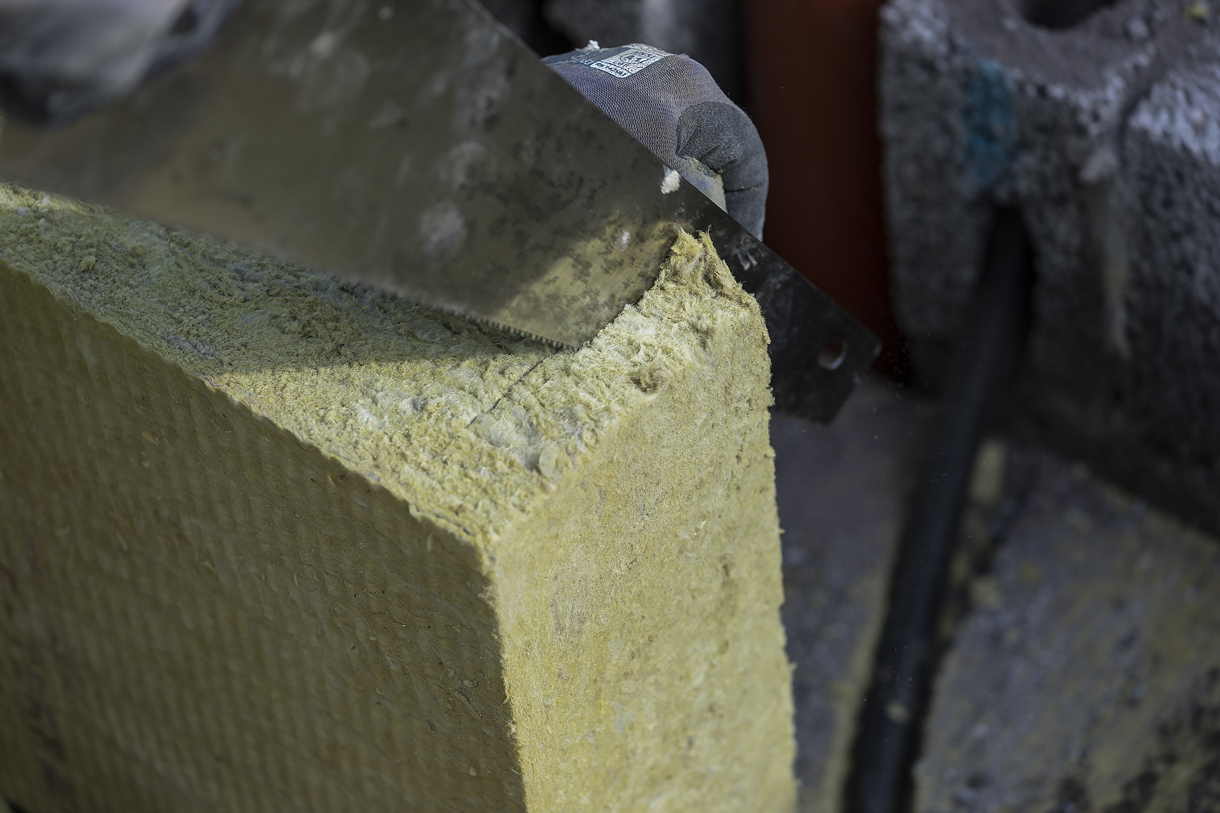Rising energy bills have affected us all, but social housing residents have felt the impact of increasing tariffs disproportionately. Here, Paul Barrett, Head of Product Management at ROCKWOOL UK outlines how housing providers can improve their homes’ energy, as well as fire safety and acoustic performance, for now and the longer term.
A report by the National Housing Federation in November last year found that social housing residents’ heating bills would reduce by 42% if their homes were insulated and draught-proofed, equating to a saving of over £700m. The same report also highlighted the inordinate impact of rising energy costs on residents, with those in the least efficient homes — rated EPC G — spending up to 15.5% of their income on heating bills, almost five times the national average based on October 2022 prices.
These figures highlight the scale of the challenge, but also the opportunity to reduce the carbon and financial impact of the UK’s leaky homes through an effective building fabric. Yet to realise these improvements, housing providers must think longer-term especially when it comes to insulation.
Consistency is key
Insulation’s ability to perform is twofold. Firstly, it is critical to specify insulation that will continue to provide energy-saving benefits well beyond installation and secondly, ensure it is fitted correctly in the first place.
For insulation to be effective and remain so, dimensional stability is key as the air pockets within it help prevent heat transfer. Squashed and sagging insulation — whether in the wall, roof, or floor — can affect these energy-saving capabilities.
Made from basalt rock, stone wool insulation has proven dimensional stability and can maintain its shape and properties over time across a wide range of temperatures. Its high-density semi-rigid composition also means it is resilient to building movement when fitted under compression and will not slump in the cavity or sag in a loft. In fact, when independently tested, stone wool insulation has been shown to provide consistent performance for up to 55 years (1) — without a drop in its thermal properties.

The importance of fit
While changes to Approved Document L in England place greater scrutiny on closing the gap between designed and as-built performance, performance gaps often occur in areas that cannot be seen. As such, social housing providers must stringently monitor the quality of works and ensure insulation is fitted successfully to achieve the required performance once a property occupied.
The first step in achieving this designed performance is to be certain that insulation is installed contiguously and without gaps. Again, the composition of stone wool insulation makes this process easier as it is highly pliable so can be closely friction fitted, without the need for impractical levels of precision cutting. This simplicity minimises the margin for error, supporting reliable and effective thermal performance
that reduces thermal bridging.
This process also applies to abutments between insulation boards, another area that can be prone to thermal leakage. As stone wool insulation slabs are designed to knit together, they create a seamless fit that supports the delivery of designed U-values and ongoing thermal performance that will help to reduce financially debilitating energy bills for decades to come.

Additional value
Increasing energy costs and the housing sector’s focus on decarbonisation have necessitated a focus on thermal efficiency as the primary driver for insulation choice. Yet thermal performance should not be seen in isolation or focused on in detriment to other critical factors that affect the long-term safety and comfort of buildings, and the wellbeing of residents.
As stone wool insulation is manufactured from naturally occurring volcanic rock, it has a natural, innate non-combustibility, meaning that many solutions achieve a European Reaction to Fire Classification of A1 — the highest possible rating. Stone wool insulation products also present a solution for high-rise housing — for both new-build and retrofit recladding scenarios — following the ban on combustible materials in the external walls of relevant buildings over 18m (2) in England which came into force in 2018.
A further benefit of stone wool is its breathability, which allows air vapour to pass through its structure and escape. This helps reduce the risk of damp and mould and the health implications and remedial works they bring.
With noise from neighbours one of the most common anti-social behaviour complaints, the acoustic performance of chosen insulation is an additional consideration that will benefit both the occupier and housing provider’s resourcing. Due to its dense, non-directional fibre orientation and an open porous structure, stone wool traps sound waves and reduces sound energy and can be used to prevent unwanted noise both within a home and from external sources.
With the decarbonisation of social housing stock expected to cost over £36bn in England alone (3) and take housing associations many years to deliver, it is an exercise that is important to get right, as well as one to avoid repeating. By opting for stone wool insulation that is proven to perform thermally across a building’s lifetime, social housing providers can ensure this historic investment has a lasting impact on current and future generations, and through the material’s additional benefits, safeguard health, safety, and wellbeing for years to come.
1. FIW (German test and research institute), Durability Project Mineral Wool, 2016
2. In England, ADB also provides guidance on the use of combustible materials in residential buildings over 11m and in Scotland the ban applies to buildings over 11m.
3. National Housing Federation, 2021










